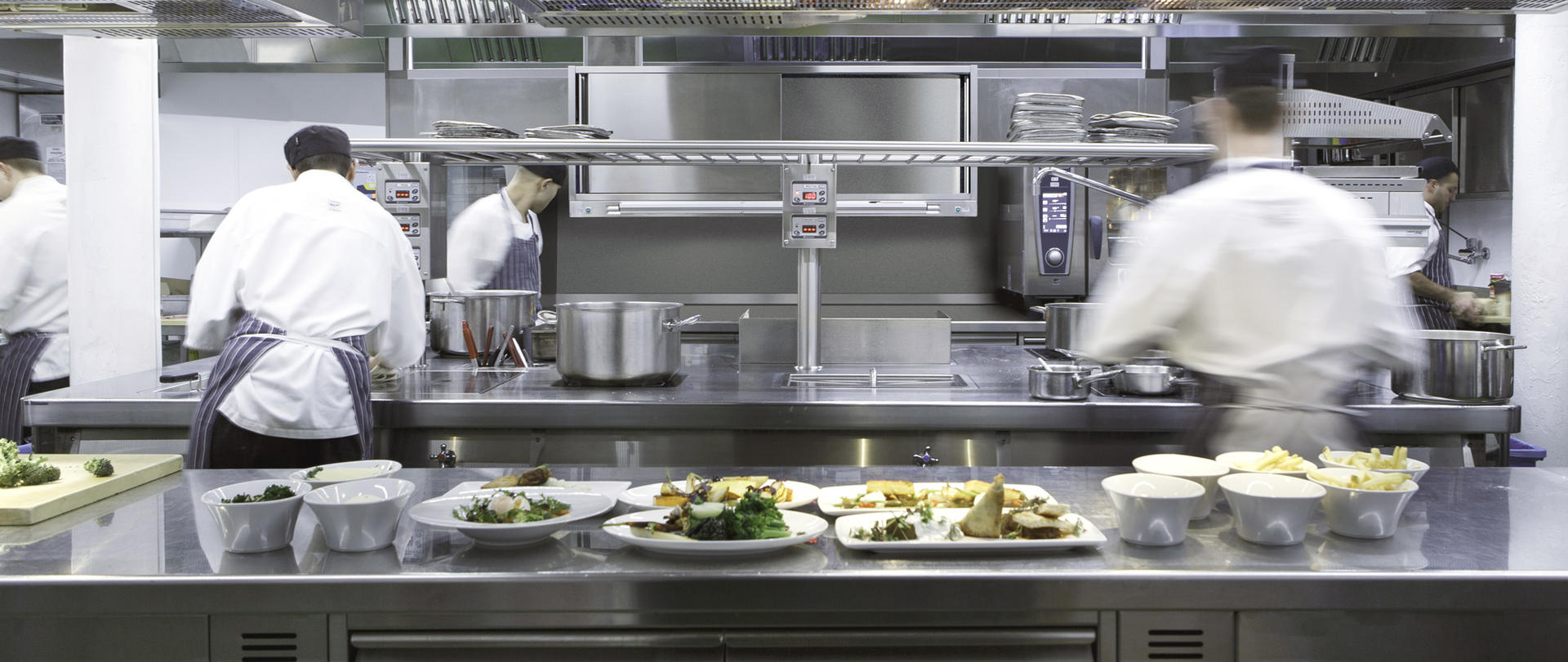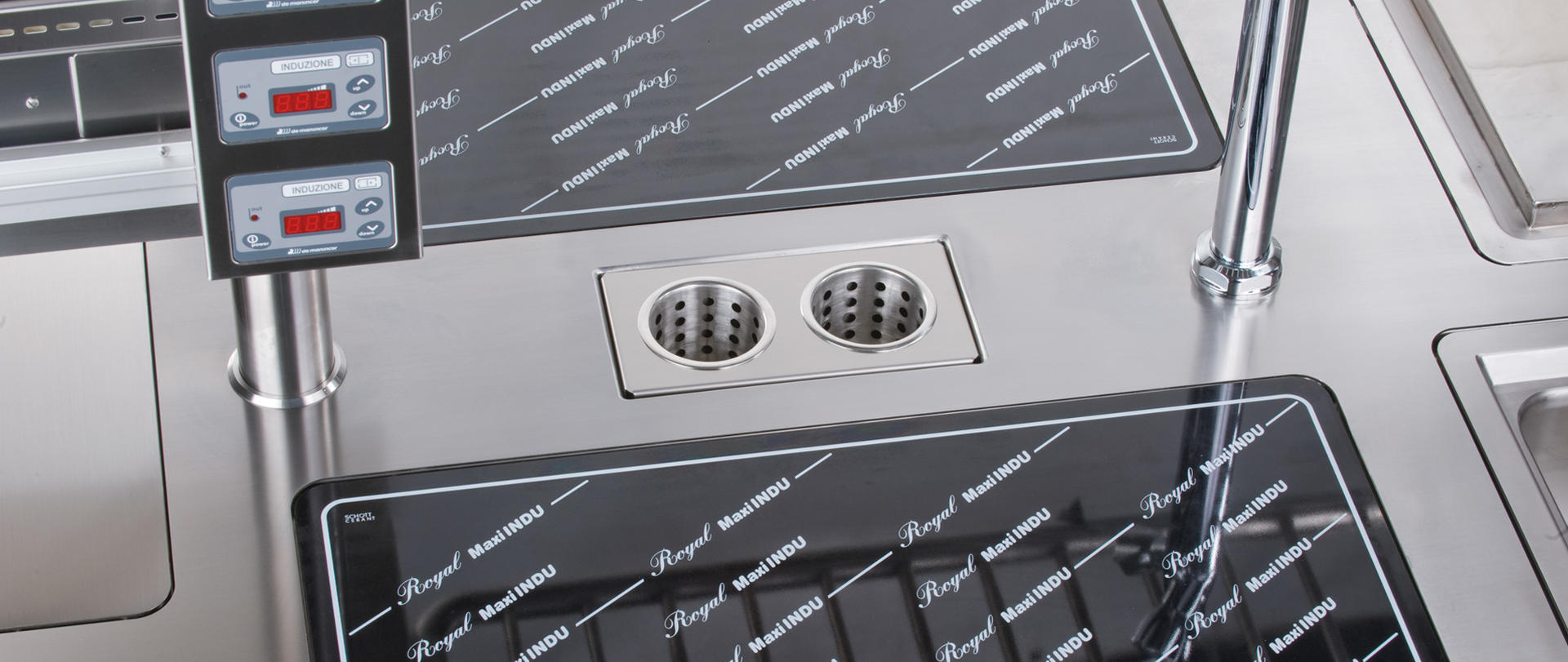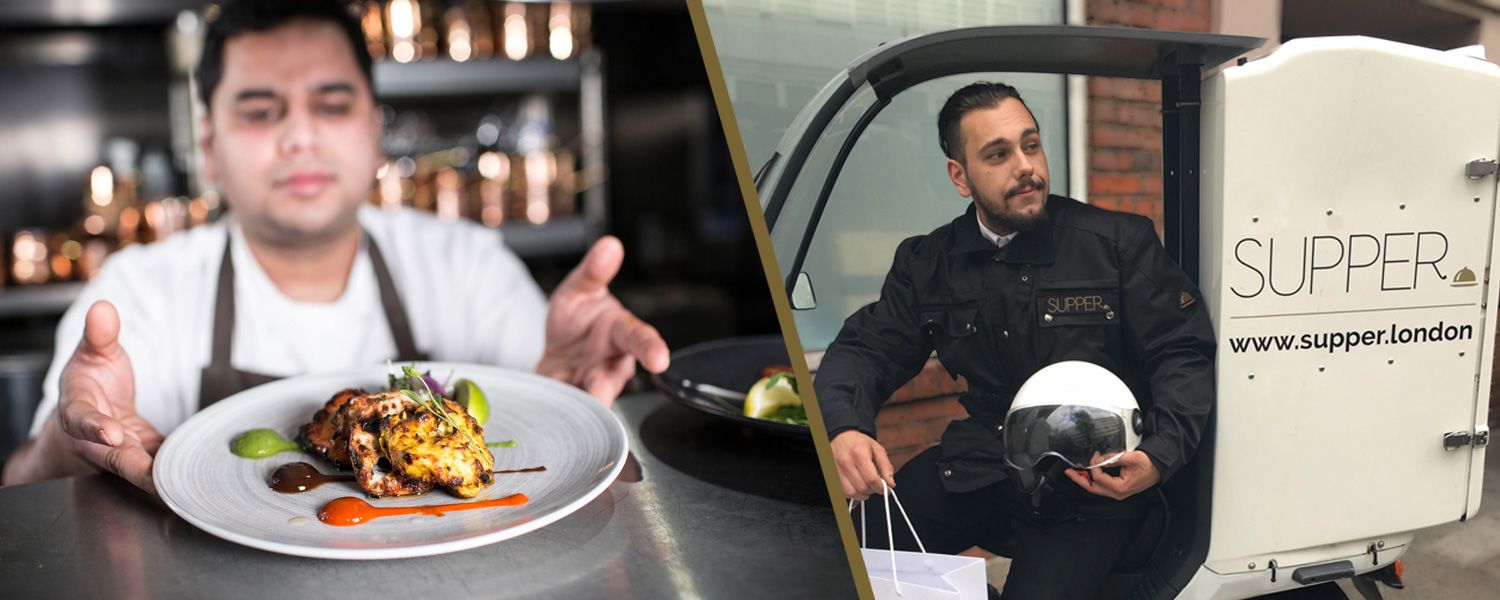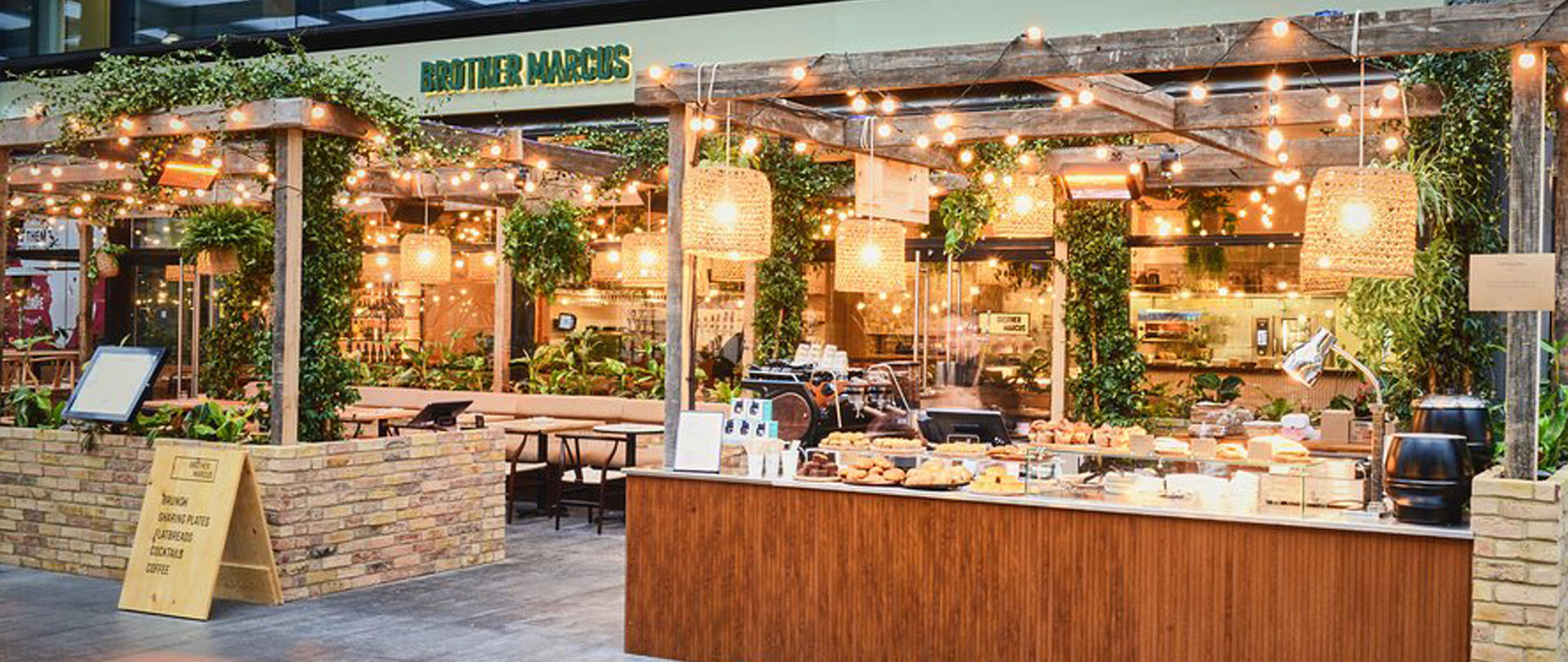Opening Post-COVID-19 – And How to Operate Efficiently
The Coronavirus outbreak has challenged the livelihood of the hospitality industry. From the casual dining arena to fine-dining restaurants and the world’s most famous hotels, shutting doors was an unprecedented move.
As the UK enters the next phase of lockdown, one of the biggest questions posed by restaurateurs and chains alike is when can we re-open, and what will it look like?
With the latest indication that the hospitality sector could open from 4th July, it is still difficult to keep well-informed of how COVID-19 may affect the hospitality sector. But what is clear, is that aspects of social distancing are here to stay. This is likely to affect who we can dine with and most importantly, how we dine.
Restaurateurs and the wider hospitality industry are concerned about having to operate with social distancing measures in place. But is it possible to remain profitable, or at least break even, at reduced occupancy?
Whilst every restaurant or hotel is different, several measures could be put in place to help increase efficiency and reduce your costs. This could all mean you may be able to operate cost-effectively at lower occupancy.
From changing your working practices and the multi-purpose equipment that can support it, to adapting menus and changing your business model, there is lots to consider.
So we thought we’d put together the following ideas that we think will help you to operate your restaurant and kitchen more efficiently. And if you have any questions please don’t hesitate to contact us for complimentary advice or a design consultation.
Streamlining your Menu & Pre-Ordering
One of the first things to consider will be to streamline your menu. Whilst consumers like choice, the reality is that such a varied menu with reduced covers could see increased wastage and add complexities to the cooking process.
Therefore, streamlining your menu to the most popular dishes will help ensure you can predict demand and purchase food that will get used.
Also, encourage your customers to pre-order at the point of booking. This means that you are aware of the expected demand for certain dishes and produce, helping to reduce wastage and make the cooking process more efficient. Operating on a book only basis will help reduce queues and ensure you’re able to maintain social distancing, without disappointing customers having to turn them away.
One thing to consider is those dishes that you can prepare in advance and cook in batches, saving time and benefiting from the adage of economies of scale.
This leads us on to preparation and overnight cooking…

Preparation and Overnight Cooking
One of the biggest concerns when re-opening will be the cost of your brigade and kitchen staff versus the number of covers you will be able to accommodate in the restaurant.
Several techniques can be explored to help reduce the number of staff needed within the kitchen:
- The first is bulk preparation of the raw ingredients. After you have streamlined your menu you may find that you can prepare vegetables in batches.
- By incorporating equipment such as a Robot Coupe veg prep machine, it will help with this; you can still achieve great results but a lot quicker.
- When it comes to overnight cooking, we highly recommend the Rational VarioCookingCenter® (VCC). This highly versatile piece of equipment is safe to use unsupervised, allowing your team to carry out other tasks.
- From overnight boiling of meat joints to braising, the VCC will mean no chefs are needed for the majority of the cooking process.
- What’s more, you can use the same piece of equipment for deep frying, sous-vide and pressure cooking, meaning that you aren’t using as many pieces of equipment, saving on energy and potential maintenance costs of rarely used equipment.
By working smartly, you can help reduce the time chefs spend cooking, resulting in shorter shift patterns. Smart, versatile catering equipment will also help with staggered working times which you may need to implement to achieve social distancing in the kitchen.
Rational also say that “conventional cooking appliances such as tilting pans, boilers, ranges and deep-fat fryers are combined in just one multifunctional unit. This, therefore, reduces the space requirement in your kitchen by up to 30%”.
This leaves you more space to accommodate any social distancing rules. And if you have any queries, please do not hesitate to contact us for complimentary advice or design consultation.
Rational VarioCookingCenter® Key Stats:
Save 40% in electricity & 70% in water every day
Save 2+ hours per day
10% less consumption of raw materials
If you cannot invest in a new Rational VCC and have an existing Rational SelfCooking Center® Combi oven, you could consider utilising their ConnectedCooking software. This means you can monitor your Combi oven remotely, whether it’s how long left on the cleaning cycle to push-notifications on the progress of the cooking. All meaning you can leave the Combi oven to do its thing whilst you or your brigade concentrate on something else.
And with automatic HACCP documentation, it will help save time and money, allowing you to concentrate on what’s important to you.
Your existing Rational SelfCooking Center® may have an overnight cooking function, enabling you to stagger cooking processes and operate with greater efficiency over a long period of time.
Out with Cook-Chill, in with Service Temperature Food Preserving
One thing to consider is how you cook. Whilst cooking to order arguably produces the best results, it is both time consuming and relies on a certain number of covers to remain cost-effective.
Cook-Chill has been in existence for many years and is often only considered suitable for larger banquets or catering institutions. However, some of the latest technology means the chilling process is not required at all.
The Unox EVEREO® uses “Service Temperature Food Preserving which is a patented technology that has been designed to preserve food at the temperature at which it is served and eaten.”
What this means is that you can prepare dishes in the morning (from your streamlined menu) and serve these within a matter of minutes during evening service. This all helps with staggered working times for preparation and service, whilst maintaining the quality of food.
With EVEREO® technology you can save 10+ minutes per dish from traditional Cook-Chill-Regeneration methods.
It isn’t just reserved for the faster casual dining sector, with many Michelin-starred chefs utilising the technology.
“I found the EVEREO® to be very useful, especially in the preparation of meat, which is a key ingredient in a restaurant like ours. Generally speaking, it is also a valid instrument for other products.
“The EVEREO® has brought many benefits to our kitchen and to our dining rooms, such as increasing the number of tables served, optimizing of space and time, and improving cost management.”
Chef Iside De Cesare, La Parolina – 1 Michelin Star
More cost-effective ways to pre-prepare foods, cook and keep at temperature ready for service could include:
- A bain-marie is designed to gently keep pre-cooked food ready to eat for extended periods
- Alto-Sham cook & hold ovens with “Halo Heat® technology, are designed to produce better food quality and higher yields. Gentle, radiant Halo Heat evenly surrounds food without the use of extremely hot elements, added humidity or fans. One of the most versatile and efficient pieces of equipment in the industry, Alto-Shaam Cook & Hold Ovens are engineered to maximize return on investment.”
- Other hot-hold cabinets are also available such as a Thermodyne holding cabinets and “Slow Cook and Hold”
Other Technologies and Equipment for More Efficient Cooking
There are other technologies and equipment you could consider implementing which will help save costs in the mid to long-term:
- Induction cooking – whilst many chefs are reticent to consider induction cooking, the latest technology means that a lot of the concerns from yesteryear should be gone. What is more, induction cooking is a lot more energy-efficient, with an only-on when you need it basis. An added benefit is that it reduces ambient heat in the kitchen which could, in turn, reduce costs for ventilation, air-conditioning and make your brigade more productive.
- Connected cooking – many appliances will offer the ability for remote diagnostics and repairs. By investing in the latest technology, some key pieces of equipment can be monitored and often repaired on a first-fix basis without an engineer visiting site. This all-in turn reduces ongoing maintenance costs of your equipment (and causes you less disruption!).
- Granuldisk dishwasher – the latest powergranule based pot washing from Granuldisk can clean pots and pans in 2 minutes without pre-washing. With high capacity, water-saving, time-saving and chemical saving technology, you can clean essential pots and pans with greater time and labour efficiency.

Breakfast – the most important meal of the day
We have explored the efficiency of cooking and associated equipment, but what else can be done to maximise the earning potential of your restaurant?
Many costs experienced are fixed, such as rents. So why not consider opening for longer? Whilst this can have potential implications for running costs such as electricity, these will likely be minimal. For example, as refrigeration and freezers are running 24/7, opening for longer will make little difference to their energy consumption.
Therefore, opening for breakfast can help spread the number of covers you will be able to serve throughout the day.
Remember to keep the menu streamlined, and, utilise equipment already at your disposal which means the investment to open earlier is reduced.
The hospitality sector is inherently a social one, and by allowing your customers to socialise at a time that is both convenient, and safe for them, it can help you achieve the same number of covers you ordinarily would from lunch until dinner.
Breakfast can help achieve the same number of covers but over a longer period, allowing for reduced occupancy in the restaurant
The Delivery Supplement
In the wake of the Coronavirus outbreak many operators will have adapted to delivery, or, continued to offer delivery.
However, for those restaurants that do not already offer it, it is not a cost-effective proposition to offer delivery only when you have the overheads of a restaurant.
But when you can re-open, albeit, with social distancing measures in place, the delivery offer can add a revenue stream, helping supplement the reduced occupancy within the dining space due to the 2m social distancing rule.
If you thought your kitchen or restaurant could not accommodate takeaway service due to capacity, now you might be able to with a quieter kitchen and dining space.
There are of course measures that need to be considered to protect the workforce and diners, whilst also maintain the dining ambience or experience you are renowned for. Who wants a helmeted delivery driver entering their restaurant?
So whilst you may have the desire to offer delivery, it’s important to consider the practical implications:
- Is there a back-of-house entrance/exit that delivery drivers can use? Or could you consider kerbside deliveries for takeaway?
- Do you have the facility to package delivery meals at the same pass as restaurant meals? Maybe a slight reconfiguration of your fabrication and kitchen design will help.
- Can you guarantee the quality of meals through aggregators such as Deliveroo or JustEat? That is where a streamlined menu will help.
And on quality, consider SUPPER London. It is a delivery service specialising in the fine-dining arena, with specifically designed technology and well-presented drivers to deliver the same fine-dining restaurant experience but at home.

Go Al-Fresco
The latest government advice has hinted that there is strong evidence that the spread of Coronavirus outdoors is much lower. Therefore, there is a possibility that cafes and pubs with outdoor spaces could open sooner than those only with enclosed spaces, especially as we enter the summer months.
If you’re able to, consider using outside spaces to increase the number of covers you’re able to accommodate. It may also help you opener sooner than expected.
Consumer confidence is also likely to be higher with al-fresco dining if they know the risk of spread is much lower.
Your reduced, streamlined menu and working practices in the kitchen will help you to make the most of this.

Your Operating Efficiently Guide
We hope that the above information provides some insight into how you may be able to operate your restaurant more efficiently. The efficiency gains will hopefully enable you to reduce costs and operate at reduced occupancy more viable.
The hospitality industry will have a challenging number of months ahead of it, but we hope that by collaborating on ideas and initiatives, we can all support each other moving forward.
If you’d like to discuss how you can increase efficiency within your kitchen or hospitality environment, don’t hesitate to get in touch by using for the form below.
We’ll be happy to support you with free advice, remote consultation or on-site consultation with social distancing when we’re permitted to do so.

